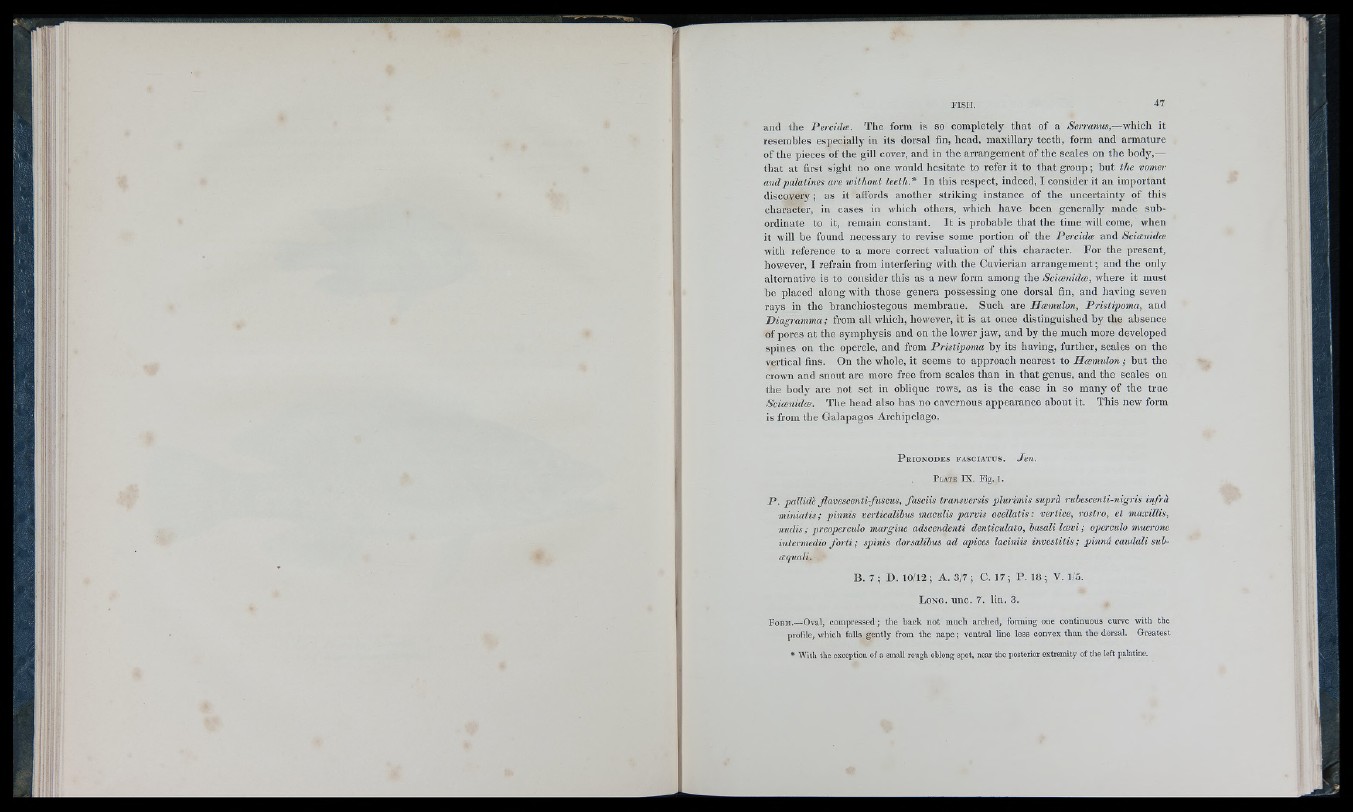
and the Percidac. The form is so completely that of a Serranus,—whicli it
resembles especially in its dorsal fin, bead, maxillary teeth, form and armature
of the pieces of the gill cover, and in the arrangement of the scales on the body,—
that at first sight no one would hesitate to refer it to that group; but the vomer
and palatines are withoxit teeth.* In this respect, indeed, I consider it an important
discovery; as it affords another striking instance of the uncertainty of this
character, in cases in which others, whicli have been generally made subordinate
to it, remain constant. It is probable that the time will come, when
it will be found necessary to revise some portion of the Percidce and Scianidce
with reference to a more correct valuation of this character. For the present,
however, I refrain from interfering with the Cuvierian arrangem ent; and the only
alternative is to consider this as a new form among the Scicenidce, where it must
be placed along with those genera possessing one dorsal fin, and having seven
rays in the branchiostegous membrane. Such are Hcemulon, Pristijwxna, and
Diagramma; from all which, however, it is at once distinguished by the absence
of pores at the symphysis and on the lower jaw , and by the much more developed
spines on the opercle, and from Pristipoma by its having, further, scales on the
vertical fins. On the whole, it seems to approach nearest to Hcemulon; but the
crown and snout are more free from scales than in that genus, and the scales on
the bodv are not set in oblique rows, as is the case in so many of the true
Scicenidis. The head also has no cavernous appearance about it. This new form
is from the Galapagos Archipelago.
P r io n o d e s f a s c ia t u s . Jen.
P l a t e IX . Fig. 1.
P . palUdè flavescenti-fuscus, fasciis transversis plurimis suprà ruhescenti-nigris infrà
miniatis; pinnis verticalihis maculis parvis ocellatis: vertice, rostro, et maxillis,
nudis ; preoperculo margine adscendenti denticulato, basali Icevi ; operculo mucrone
intermedio forti ; spinis dorsalibus ad apices laciniis investitis ; pinnà caudali sub-
(Tquali.
B . 7 ; D . to/ 12 ; A . 3/7 ; C . 17; P . 18 ; V . 1/5.
L o n g . u n c . 7 . lin . 3.
F o rm.— Oval, compressed ; the back not much arched, forming one continuous curve with the
profile, which falls gently from the nape; ventral line less convex than the dorsal. Greatest
• With the exception of a small rough oblong spot, near the posterior extremity of the left palatine.